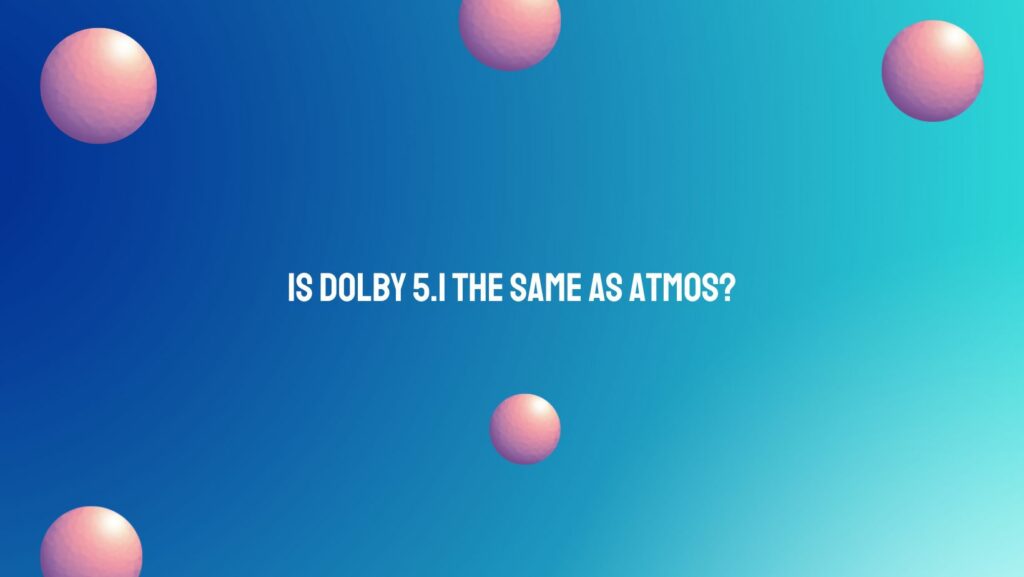In the world of audio technology, Dolby has been a pioneering force, continually pushing the boundaries to enhance our cinematic and home entertainment experiences. Two prominent audio formats, Dolby 5.1 and Dolby Atmos, have gained widespread recognition. While both aim to deliver immersive sound, they are distinct in their approaches and capabilities.
Dolby 5.1: The Foundation of Surround Sound
Dolby 5.1, also known as Dolby Digital 5.1, has long been the standard for surround sound in both movie theaters and home entertainment systems. The “5.1” in its name refers to the five main channels: front left, center, front right, rear left (surround), and rear right (surround). The “.1” indicates the presence of a dedicated low-frequency effects (LFE) channel, typically reserved for deep bass sounds like explosions and thunder.
This format is a bedrock of home theater systems, providing a more immersive audio experience than traditional stereo setups. Dolby 5.1 creates a sense of directionality and depth, allowing viewers to feel surrounded by sound, particularly in action-packed movie scenes.
Dolby Atmos: Elevating the Audio Experience
Dolby Atmos, on the other hand, is a revolutionary leap forward in audio technology. Unlike traditional channel-based systems like Dolby 5.1, Dolby Atmos employs object-based audio. Instead of assigning sounds to specific channels, audio elements are treated as individual objects that can move freely around the listener in a three-dimensional space.
In Dolby Atmos, speakers can be placed not only around the listener but also above, creating a truly immersive “height” dimension. This ability to position sounds in a 3D space provides a more lifelike and dynamic audio experience. With Dolby Atmos, filmmakers and sound engineers have the freedom to precisely place and move sounds, enhancing the sense of realism and immersion in movies, TV shows, and video games.
Compatibility and Setups:
While Dolby 5.1 is widely supported in various audio and video devices, Dolby Atmos requires specific hardware and software support. Dolby Atmos-compatible systems include additional speakers for height channels, creating a setup that truly takes advantage of the three-dimensional audio experience.
Conclusion:
In summary, Dolby 5.1 and Dolby Atmos serve as milestones in the evolution of audio technology, each offering a unique approach to surround sound. Dolby 5.1 remains a reliable and widely used standard, providing an immersive audio experience for home entertainment. Dolby Atmos, with its object-based audio and three-dimensional soundscapes, represents the cutting edge of audio innovation, bringing a new level of realism and immersion to the audiovisual experience. Ultimately, the choice between Dolby 5.1 and Dolby Atmos depends on individual preferences, equipment compatibility, and the desired level of audio immersion.


